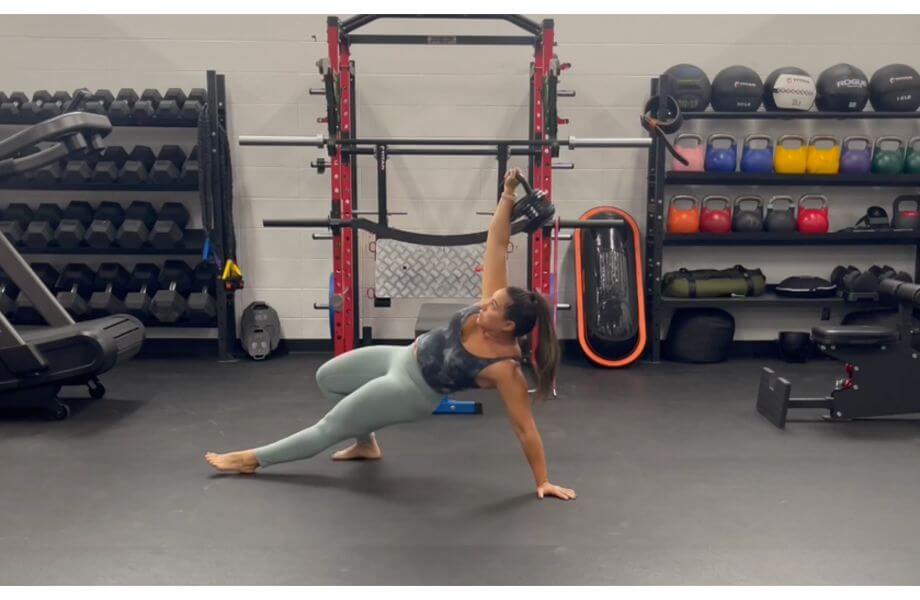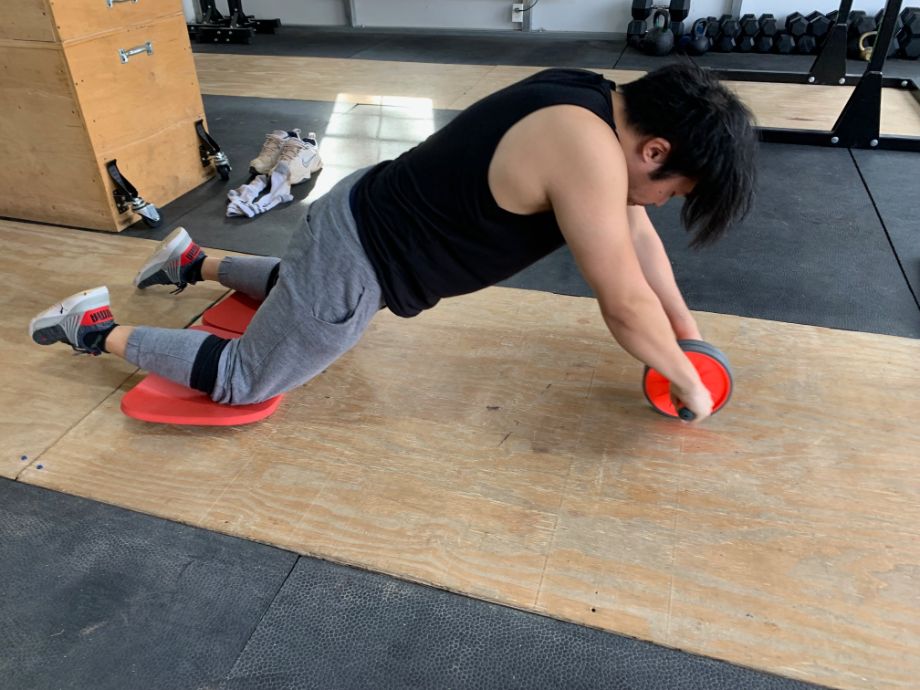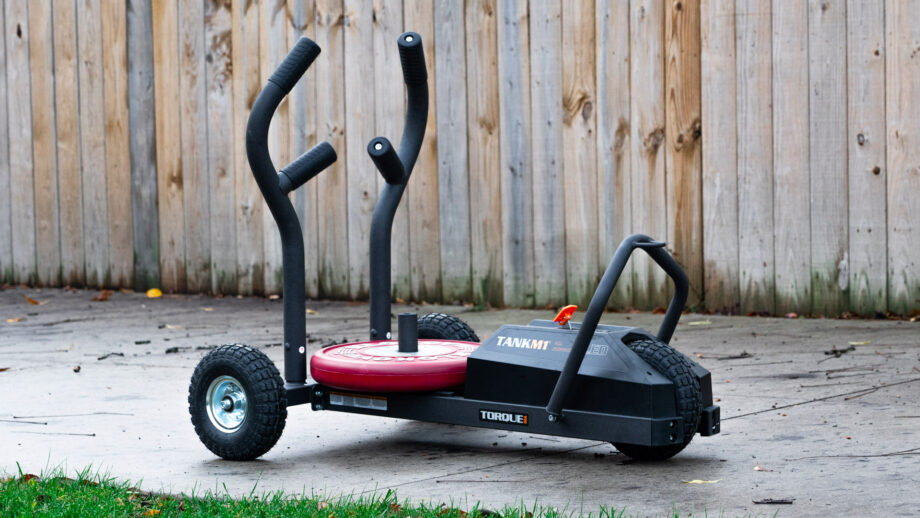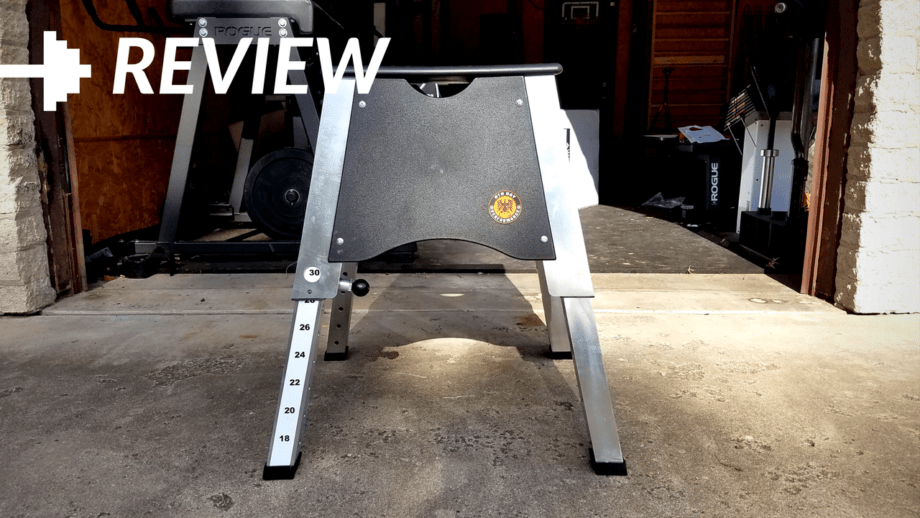It’s simple to overlook the Turkish get-up as one of the best kettlebell exercises to build strength in the gym. However, the TGU delivers a challenging full-body workout, requiring you to move from the floor into a lunge pattern and topping things off with the ability to get to a standing position (did someone say, “functional”?).
The Turkish get-up can be humbling for beginners and experienced gym goers due to the difficult task of using upper- and lower-body strength, core strength, upper- and lower-body mobility, and joint stability to perform the exercise.
With extensive experience as a certified strength and conditioning coach (CSCS), I understand the importance of preserving shoulder health and consistently practicing a functional range of motion during strength training. It is equally crucial to integrate full-body exercises into your fitness regimen. In the following sections, I will provide step-by-step instructions for precisely executing the Turkish get-up (TGU) and touch on the advantages of adding this full-body exercise to your workouts.
Related: Full-Body Workout At Home
How To Do The Turkish Get-Up Exercise
This illustrates how to do a bodyweight Turkish get-up, though you could perform this holding a kettlebell, barbell, dumbbell, or any other implement in one hand.
- Position yourself on the floor, lying face up.
- Bend your right knee and place your right foot on the floor.
- Slide and extend your left leg out at a 45-degree angle, and do the same with your left arm with your palm on the ground.
- Raise your right arm so your right hand is above your chest.
- Sit up, using your left arm for assistance, keeping the right arm fully extended overhead.
- Sweep the left leg underneath you, and take your left hand off the ground to get into a lunge position.
- Push your right foot through the floor to stand up.
- Perform the reverse to return to the starting position and repeat on the other side.
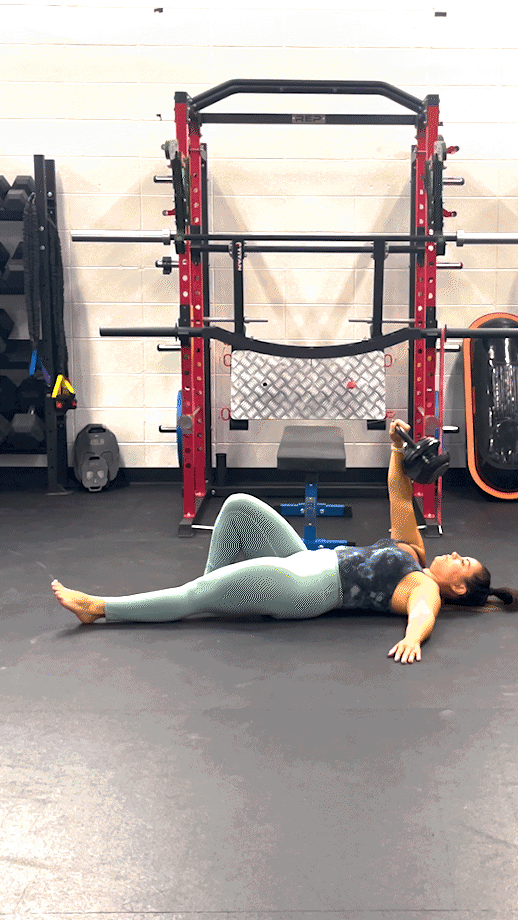
Trainer Tips for Form
The Turkish get-up is an exercise where you must perform each step with focus and intent, piecing the movements together like a puzzle and avoiding common mistakes. Here are a few tips on how to do a Turkish get-up for beginners and experienced lifters alike.
Focus on How You Set Up
Ensure your setup is spot on with each rep to guarantee excellent movement patterns. Leg and arm positioning is crucial to help you transition from the floor to a half-kneeling position and into the lunge position.
For your grip, have the kettlebell placed correctly with the handle in the palm of your hand and the bell resting against the back of your forearm. Checking these boxes helps you avoid common mistakes and get the most out of your kettlebell training.
RELATED: The Best Kettlebells for Your Home Gym
Stability Is Movement Ability
Keep complete control as you move through each position of the Turkish get-up, stabilizing the weight. The key here is to move your body around the weight rather than allowing the weight to move around you. Doing this enhances your body’s movement patterns and helps you get the most out of your strength workouts. Pro tip: Keep your core braced and your eyes on the weight throughout the exercise.
Take It Step by Step
A Turkish get-up is a challenging, full-body kettlebell exercise that you perform slowly until mastered. Each piece of the get-up can be considered its own movement. You can pause between the parts of the Turkish get-up to check your form and then look to conquer these before you move on to creating one fluid motion.
When performing the Turkish get-up, think of piecing each movement together, going step by step through the exercise. Master the basics first, and consider introducing the exercise in your warmup. Start with a bodyweight movement and gradually add light weight as you become more comfortable.
Always Be Reaching
The entire time you perform a rep, always reach up through the kettlebell (or whatever weight you’re holding) to stabilize the shoulder joint and stay tight through the exercise. This constant tension helps you use more of your major muscle groups during the exercise.

Benefits of Turkish Get-Ups
Adding the Turkish get-up to your training routine can lead to a number of physical benefits.
Full-Body Gains
The Turkish get-up improves the full body stability, balance, and mobility1 needed to navigate the entire body through lying, kneeling, and standing positions while holding a weight. You train stabilizing muscles in areas like the shoulders, traps, glutes, hamstrings, and core, increasing full-body strength.
RELATED: Full-Body Workout vs Split
Improved Shoulder Health
The Turkish get-up can improve strength in muscles like the delts, pecs, traps, and rotator cuff while at the same time improving the function of your shoulder blades. This all leads to increases in shoulder mobility and joint strength2. During the exercise, you perform an isometric hold (essentially, continuously squeezing your muscles as you hold that weight over your shoulder). This forces the small stabilizing muscles in your shoulders, triceps, and upper back to develop, resulting in improved shoulder health.
RELATED: Best Shoulder Exercises
Core Strength
The Turkish get-up demands core strength and stability. During the movement, the core muscles (abdominals and obliques) help stabilize the torso and improve the body’s movement during physical activity3. Having a strong core also helps you to be powerful in the gym during your workouts and helps support your balance during other kettlebell exercises.
Turkish Get-Up Variations
The Turkish get-up can be performed with the best adjustable dumbbells or kettlebells. Don’t have any fitness equipment on hand? Knock out a few sets and reps using your body weight to warm up the movement. If you are trying the Turkish get-up for the first time, use some variations listed below, starting with light-weight. These will help you to improve your form, build strength, and gain weight-room confidence!
RELATED: Bodyweight Workouts
Kettlebell Turkish Getup
- Position yourself on the floor, lying face up, holding a kettlebell or dumbbell in your right hand.
- Bend your right knee and place your right foot on the floor.
- Slide and extend your left leg out at a 45-degree angle, and do the same with your left arm with your palm on the ground.
- Press your right arm and kettlebell above your chest.
- Sit up, using your left arm for assistance, reaching the kettlebell towards the ceiling.
- Sweep the left leg underneath you, and take your left hand off the ground to get into a lunge position.
- Push your right foot through the floor to stand up.
- Perform the reverse to return to the starting position and repeat on the other side.

Turkish Sit-Up
- Position yourself on the floor, lying face up, holding a kettlebell or dumbbell in your right hand.
- Bend your right knee and place your right foot on the floor.
- Slide and extend your left leg out at a 45-degree angle, and do the same with your left arm with your palm on the ground.
- Press your right arm and kettlebell above your chest.
- Sit up, using your left arm for assistance, reaching the kettlebell towards the ceiling.
- Lower your body to the floor with control, feeling the slow lowering through your abs and lower back.
- Reset and repeat for desired reps.
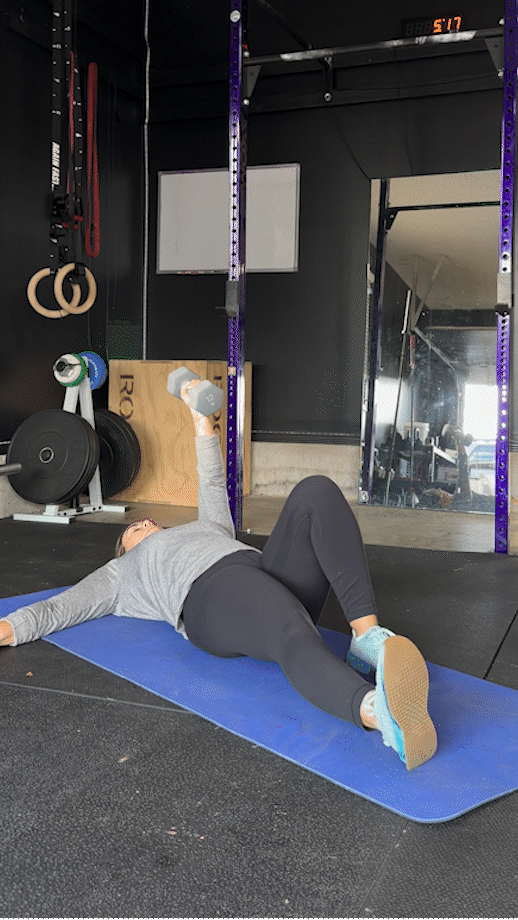
Turkish Get-Up FAQs
How often can you do Turkish get-ups?
As often as you’d like!
The Turkish get-up, an incredible full-body strength movement, is an excellent option for a warmup and can be performed daily to prepare the body for working out. You can also use the Turkish get-up for kettlebell training sessions, upper-body strength training prep, ab sessions to improve core strength, or during active recovery days working on movement patterns and mobility. Look to toss the Turkish get-up into your next cardio session due to its demanding movement patterns.
RELATED: Best Ab Exercises
What is a Turkish get-up good for?
A Turkish get-up improves upper-body strength, stability, and mobility. It is also phenomenal for increasing core strength, lower-body strength (due to the lunge pattern), and hip mobility. The Turkish get-up is one of the best full-body movements to use in a workout program, enhancing shoulder stability. It is great for beginners and experienced lifters looking to challenge their balance and coordination in the gym!
How many steps are in a Turkish get-up?
The Turkish get-up has about eight steps to perform the full movement correctly; however, there may be fewer steps depending on other variations you might try. Don’t be afraid to explore the other variations of the Turkish get-up as you add this exercise to your full-body strength routine.
References
- Leatherwood, Matthew D. BS; Whittaker, Adam BS; Esco, Michael R. PhD. Exercise Technique: The Turkish Get-up With a Kettlebell. Strength and Conditioning Journal. 2014;36(6):p 107-110. DOI: 10.1519/SSC.0000000000000096
- Moezy A, Sepehrifar S, Solaymani Dodaran M. The effects of scapular stabilization based exercise therapy on pain, posture, flexibility and shoulder mobility in patients with shoulder impingement syndrome: a controlled randomized clinical trial. Med J Islam Repub Iran. 2014;28:87. Published 2014 Aug 27.
- Okada, Tomoko; Huxel, Kellie C; Nesser, Thomas W. Relationship Between Core Stability, Functional Movement, and Performance. Journal of Strength and Conditioning Research. 2011;25(1):p 252-261. DOI: 10.1519/JSC.0b013e3181b22b3e


